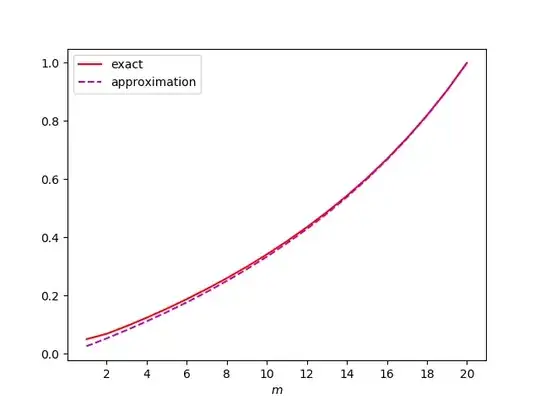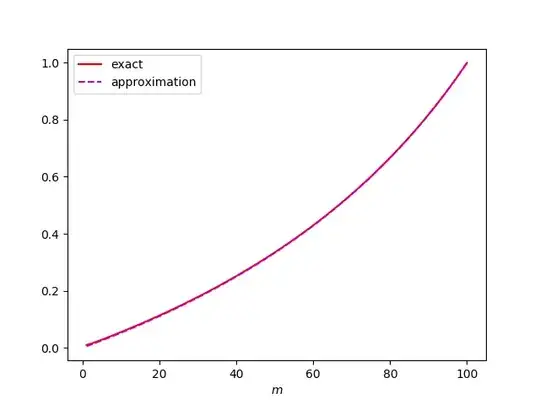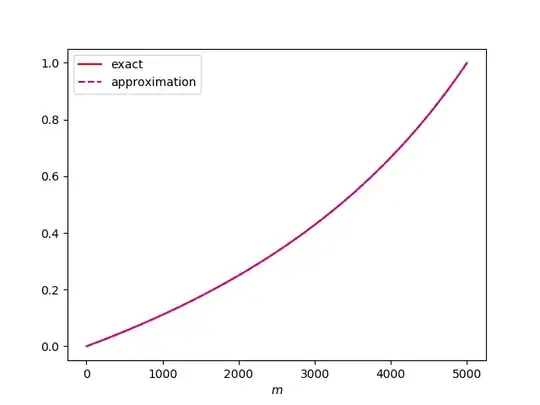I'm posting an alternative solution.
Jaccard similarity of two sets $S$ and $T$ is defined as the fraction of elements these two sets have in common, i.e. $\text{sim}(S,T)=|S\cap T|/|S\cup T|$. Suppose we chose $m$-element subsets $S$ and $T$ uniformly at random from an $n$-element set. What is the expected Jaccard similarity of these two sets? Suppose the $|S\cap T|=k$ for some $0\le k\le m$. Notice that for the first set, $S$, we have $\binom{n}{m}$ choices, while for $T$ we have $\binom{m}{k}\binom{n-m}{m-k}$ choices, because $k$ elements must be from $S$ and $m-k$ elements must not be from $S$. This gives us $$\Pr[|S\cap T|=k]=\frac{\binom{m}{k}\binom{n-m}{m-k}}{\binom{n}{m}},$$ meaning that $$\text{E}[\text{sim}(S,T)]=\sum_{k=0}^m\frac{\binom{m}{k}\binom{n-m}{m-k}}{\binom{n}{m}}\frac{k}{2m-k}.$$ Even though $\text{E}[|S\cap T|/|S\cup T|]\neq\text{E}[|S\cap T|]/\text{E}[|S\cup T|]=m/(2n-m)$, this expression seems to give good approximation.
Thanks to Mitja Trampus for pointing out an alternate solution, with $$\Pr[|S\cap T|=k]=\binom{m}{k}\frac{\binom{m}{k}}{\binom{n}{k}}\frac{\binom{n-m}{m-k}}{\binom{n}{m}},$$
giving the following expression:
$$\text{E}[\text{sim}(S,T)]=\sum_{k=0}^m\binom{m}{k}\frac{\binom{m}{k}}{\binom{n}{k}}\frac{\binom{n-m}{m-k}}{\binom{n}{m}}\frac{k}{2m-k}.$$
(The above expressions are, of course, equivalent.)
EDIT: Regarding the simplification, perhaps applying the following identity (from Aigner's book, page 13) could work: $$\binom{n}{m}\binom{m}{k}=\binom{n}{k}\binom{n-k}{m-k}.$$


